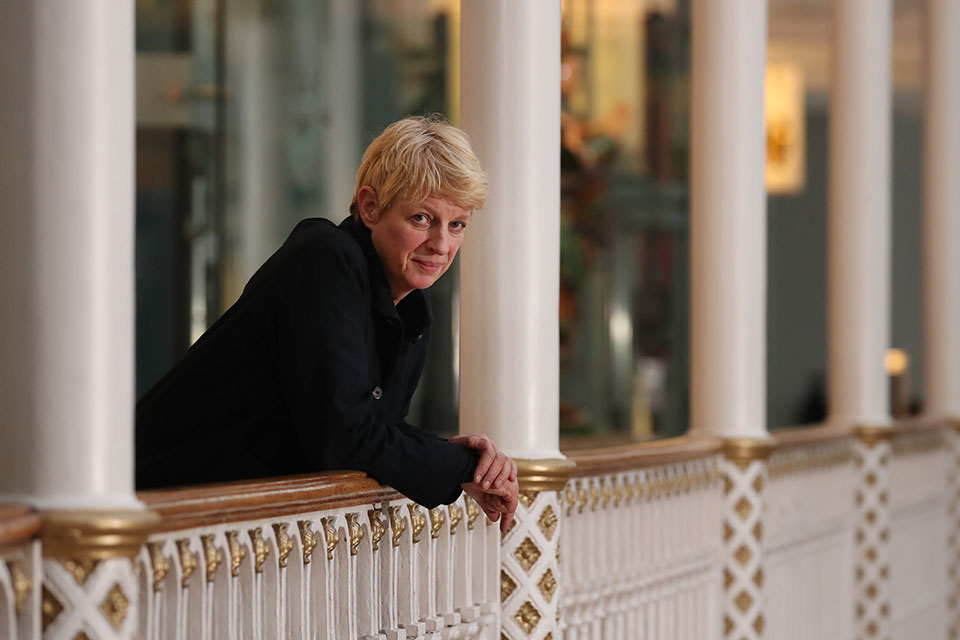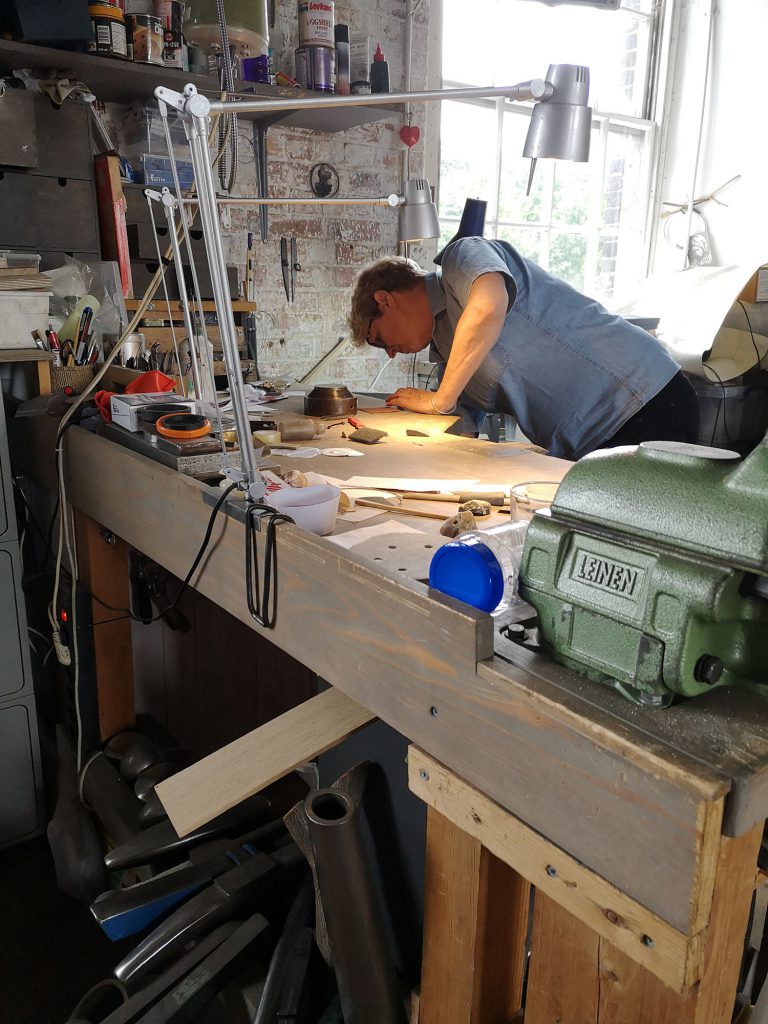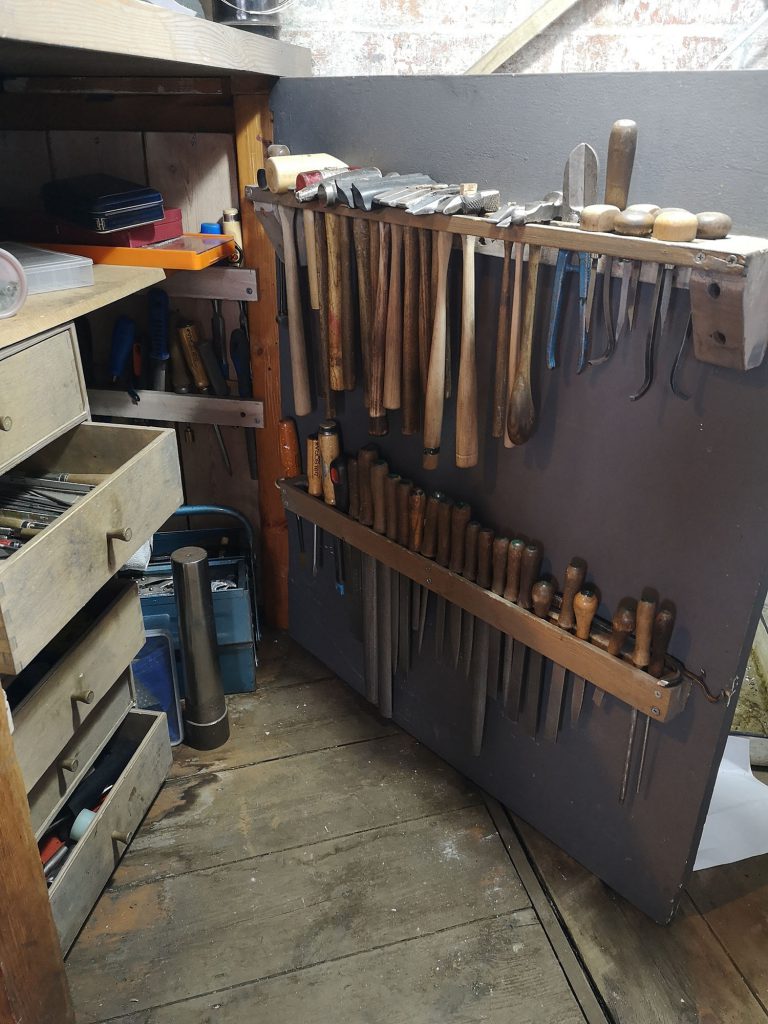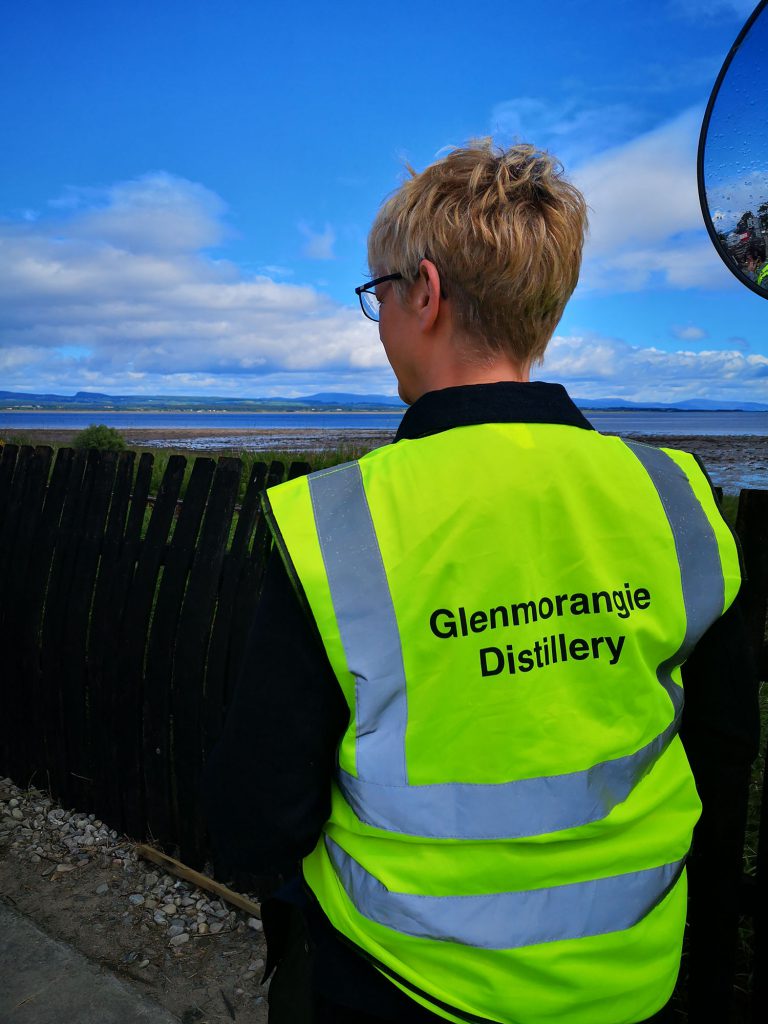Last December at the annual public Glenmorangie Lecture I had the great honour of announcing the winner of a new commission for National Museums Scotland.
Regarded as one of the most inventive metalsmiths of her generation, of international repute, and one of Britain’s most critically acclaimed craft artists, Simone ten Hompel is one of the foremost metal practitioners in the UK. Working within this medium for over 40 years, she is known for her metalwork and sculptures that subvert our ideas of domesticity and navigate the metaphorical depth of everyday vessels such as spoons and plates. And through her teaching, both here in the UK and internationally, she has influenced a new generation of artists working in this engaging material.

For over a decade, National Museums Scotland has been working in partnership with The Glenmorangie Company to support academic research into Scotland’s past. And in a new phase of engagement, it was decided to commission a major new piece of contemporary metal for display in the National Museum of Scotland’s Art & Design gallery, Making & Creating. This new commission, funded by The Glenmorangie Company, was envisaged to highlight not only those artists and designers who are challenging the perception of their chosen medium – be that by using new technologies or their use of traditional craft skills in alternative and surprising ways – but would also focus a new and artistic lens onto the work of our archaeological team here at National Museums Scotland, and their research into the early Scottish medieval collections.
Simone had been selected unanimously by the judging panel, not only for her standing within the sector – her work has been exhibited widely internationally and is held in many public collections, including the V&A Museum, London; Crafts Council Collection, London; National Museum of Wales; Goldsmiths’ Hall, London; Birmingham Museum & Art Gallery as well as our own. In 2005, she won the prestigious Jerwood Applied Arts Prize and was also the subject of a major retrospective, Confluence/Konfluenz – a life with metal, at Ruthin Craft Centre, in 2012. But most importantly Simone was selected for her enthusiasm for the project to create a new contemporary work of art in metal, that would be inspired by the collection and themes that are being researched by my colleague Dr Adrián Maldonado within the Creating Scotland project.

Since meeting Simone last year, I have been overwhelmed with her passion for all things metal. She carries with her always a silver spoon with which to stir her coffee, and her pencil to make notes is contained within its own silver case. Her wrist is adorned with a simple band that she created when just a teenager. And every time she has come into contact with an artefact within our collections, be that historic or contemporary, she has been openly enthralled, and slowly, after considering it for some moments, starts to ask questions about its origins and to give possible solutions to its construction, or in terms of the contemporary, to talk about her relationship with the makers she knew, their practice and what inspires them to work in metals, both precious and not.
She disarms all those she comes into contact with, and draws you into her world of metal. I saw this most keenly on her first encounter with our conservator Mary Davis in December following the Glenmorangie Annual Lecture. I was giving Simone, journalist and craft advocate Corrine Julius and jeweller Anna Gordon a tour of our Collections Centre, and Mary very kindly showed us some of the Galloway Hoard she was currently conserving. Unaware of who Simone was, Mary soon found herself the centre of attention, as very quickly both Simone and Anna started asking questions about her work, and then discussing how some of these pieces could have been made. By looking at the form, they could see how the pieces had been cut and shaped, the evidence of hammer marks and other tools, and also the recycling of the silver in some cases.

Simone is also noted for her openness in regard to her dyslexia, celebrating metal as her first language over the written word and saying she is most at home in her workshop, where she is able to be her most fluent and express herself through her medium of choice.
She strongly believes that true understanding of any craft must come through the experience of making, and has been involved in initiating collaborative projects and symposia around the subject of craft, making and the language and vocabulary of metal internationally.
This passion for helping others understand the possibilities of metal through making was another reason why we were excited to work with Simone. She is truly inspirational and nurtures talent, and expressly said that she wished that part of the commission would involve practical knowledge sharing to help us as curators, archaeologists and conservators to understand the possibilities of her medium. Through working with metal, we will better understand how our historical artefacts could have been or were created, or for myself in terms of the contemporary, how artists today are innovating the craft and creating truly challenging works of metal art.

Simone ten Hompel in her studio in London hiding from my camera to fish out a piece of metal to show me. 
Some of the tool’s of Simone’s trade.
So, on one sunny day in April I was lucky enough to participate in an amazing workshop conducted by Simone, which involved my colleagues Dr Adrián Maldonado and Dr Martin Goldberg, in a knowledge exchange with Glasgow School of Art (GSA) staff and artists in residence to further understand how certain archaeological pieces were potentially created.
Knowledge sharing workshops like this are so fulfilling for all the participants involved. Just sitting around a table in the GSA studio, it was fascinating to hear the conversations and theories from the staff, artists and archaeologist into how some of the finds in the collection could have been made, and how these practices and techniques have descended through the decades and are still used today.
We then had the experience of working with the silver, drawing it through the plates, then trying to hammer and close rings, with a wonderful realisation of being totally clueless to the voice of the metal, unlike Simone, who seemed so naturally entuned with it. My father, who is a joiner, would not have been impressed with my hammering technique, but it gave me a sense of the medium which I had not experienced before, of its plasticity in one regard, but, if you are too aggressive with it, its inertness and reticence to mould to your desire.
Simone’s enthusiasm for metal and its appreciation is plain to see on her face when she is in the mix of teaching, gently encouraging us and then ribbing us when we do something silly. Like for example when Adrian didn’t want to let go of the vice, believing he needed more purchase to draw the silver through the plate, even though it was plainly bolted to the bench!

Simone ten Hompel is a truly outstanding artist working within the field of craft today, and is celebrated and acknowledged internationally by her peers as the most inventive silversmith of her generation. National Museums Scotland with the support of The Glenmorangie Company is proud to be able to provide her with her first Museum Commission. And I for one am excited to see what she will create as part of this exciting exchange.

You can find out more about the Glenmorangie Research Project here.
